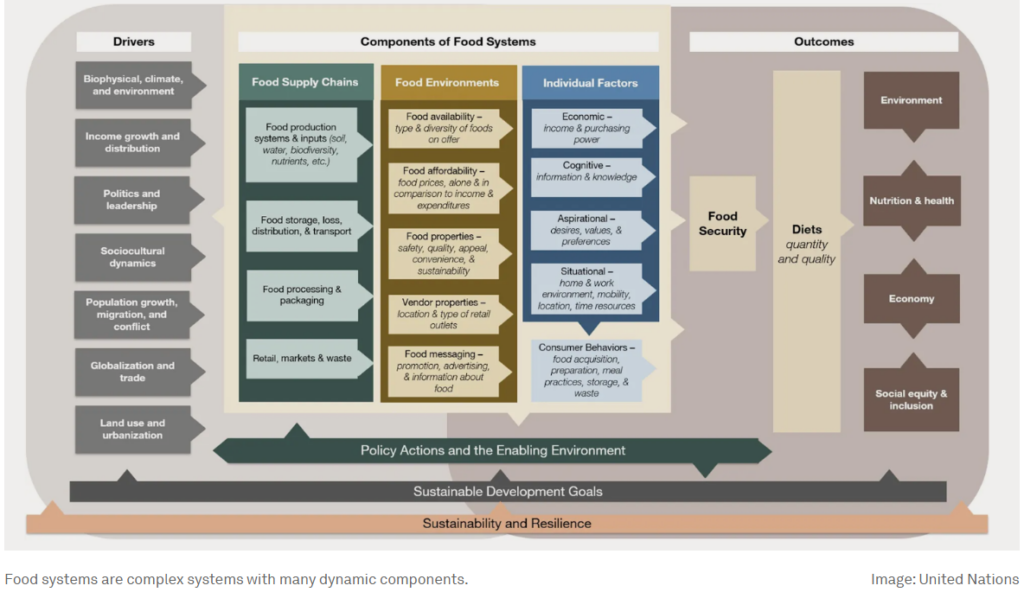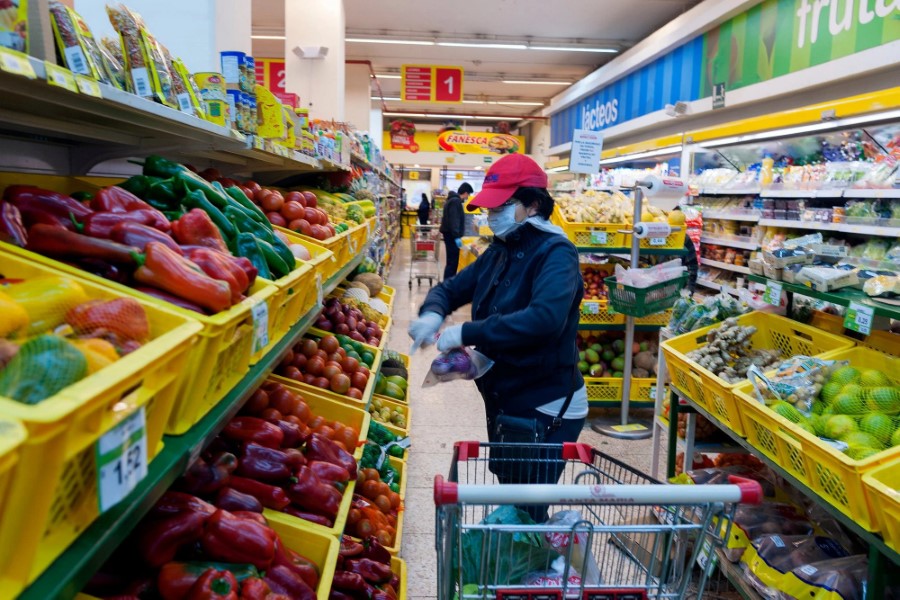In a world where the bounty of food surpasses the caloric needs of its population, it is paradoxical that hunger and food insecurity persist on a grand scale. Global food provision offers approximately 2.980 kcal per person per day—well above the 1.830 kcal needed to avoid undernourishment.
Yet around 735 million people or 9.2% of world population, still face hunger, compared to 7.9% in 2019. This means that 122 million more people face hunger, while it is projected that almost 600 million people will be chronically undernourished by 2030.
Despite recent progress, malnourishment is still on the rise hitting mainly on the poor, women, and children, especially in conflict zones like the Middle East. The world is off-track to meet the Sustainable Development Goal 2, which aims to eradicate hunger targets due to the intensification and interaction of conflicts, climate extremes and economic slowdowns and downturns, combined with highly unaffordable nutritious foods and growing inequalities.
International trade has become increasingly important for food security
The role of international trade in bridging this gap has never been more critical, with global agrifood trade growing 350% from 2000 to 2021 and reaching a total value of $1.7 trillion, the dynamics of food security have shifted. Now on average, a quarter of all calories consumed around the world are imported, with key notable regional disparities.
Over the past four decades, the volume of calories crossing borders has multiplied by 4.2 times. This trend is reflected in the fact that seven out of ten economies worldwide import more food than they export. To put these numbers in perspective, in the last two decades, according to FAO, primary crops production grew by 54%, meat production by 53%, and milk production by 58%. Meanwhile, population growth during this period was 29%. This data underscores the growing importance of agrifood trade. Trade is indeed a key driver in all dimensions of food security: availability, access, utilization, and stability.
Latin America’s Vanguard Role
In a nutshell, trade facilitates the global demand for food by matching supply and demand, stimulating investment, and improving the resilience of food systems. It is estimated that four factors will come into play:
- Demographic Dynamics: Rapid population growth, aging, and shifts in income, dietary preferences, and urbanization are likely to lead to increased demand for certain types of food, such as meat and dairy products. This intensifies international trade’s role in enhancing food availability and access, widening trade deficits for net importing countries.
- Concentration of Production: Key agricultural commodities are produced by a few countries, making agrifood products heavily traded. At a global scale, with just three top producers accounting for 65 percent of key global agricultural output, international agrifood trade remains crucial in ensuring global food security, including processed food.
- Climate Impact on Trade: Adverse climate change effects are reducing global food production by and expected 8%, exacerbating global food insecurity. Recurrent natural disasters, in the form of extreme floods, storms, droughts, wildfires, and pest and disease outbreaks, are also causing significant distress, with a total loss of approximately US$3.8 trillion in agricultural production over the past 30 years, and disruptions like the Panama Canal drought impede trade flows.
- Balanced Global Trade Network: The food and agricultural trade network is becoming more balanced as countries form trade clusters based on geographic proximity and trade agreements. Indeed, the number of RTAs in force have multiplied from fewer than 25 in 1990 to more than 350 in 20221.
Against this background, the role that Latin America and the Caribbean (LAC) can play as the main net food exporting region in the world is paramount. In a nutshell, the world needs the region in its fight against global hunger and malnutrition as part of the Global Alliance called on as part of Brazil’s G20 Presidency. Our region is a key global player in international food markets. It accounts for 14% of the value of global agricultural and fisheries production; its share of world agrifood exports is around 18%. By 2031, the region will lead the global provision of key products essential to meet food demand, including 61% of global soybean exports; 59% sugar, 45% fish feed, 43% corn, 40% fish meat and oils, and 32% chicken, further solidifying its status as a critical player in the global food supply chain.
However, challenges remain. In the last two decades, the share of agrifood in total exports rose from 15% to 25 %, and 42% of what is produced is now exported. Yet, as most Latin American countries have experienced a decline in the competitiveness of their agrifood exports over the past decade, the region’s policy agenda must take on the challenge of strengthening the agrifood sector’s international integration. Addressing traditional trade barriers (tariffs and quotas) and non-traditional trade barriers (carbon border adjustment measures and deforestation-free products), along with environmental challenges like greenhouse gas emissions and sustainable land use, is critical.
Furthermore, a sustainable transformation of LAC’s food system is also needed to materialize new opportunities. Indeed, addressing the “hidden costs for the region” is imperative. They include environmental costs from greenhouse gas emissions, nitrogen emissions, land-use transitions, deforestation, blue water withdrawals, social costs associated with undernourishment and poverty, and health costs from unhealthy dietary patterns. These hidden costs produced by our agrifood systems amount to US$493 billion per year, one of the highest in the world. The IDB estimates that decarbonization of agrifood systems could entail a net benefit to the region’s economies of $940 billion, from health benefits, household savings, and ecosystem services.
Overall, LAC has a fundamental role to play in the global fight against food insecurity. Still, a renewed trade and investment agenda is critically needed to be anchored in its sustainable transformation and stronger public–private cooperation. Food systems are intrinsically complex with many dynamic components (Figure 1), involving multiple transitions from repurposing agricultural policies to leveraging private sector participation, scaling up climate finance, or reducing food waste and loss.
Through the Integration and Trade Sector (INT), the IDB is actively promoting regional policy dialogues between public and private stakeholders to identify a strategic agenda around the more pressing trade and investment bottlenecks in order to strengthen the role that LAC can play in tackling these critical global development challenges. Experience shows that integration, coordination, consistency, and progressivity will be essential principles to achieve concrete results as collective measures and a global alliance are needed to make significant strides towards sustainable development in the region.



